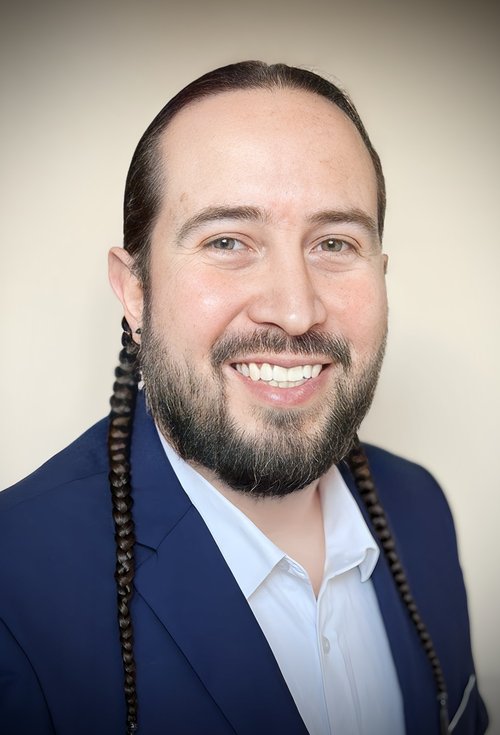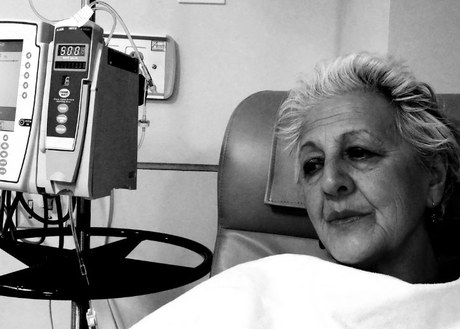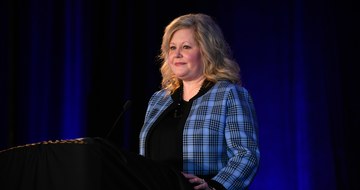HOPA Member Research
Among his notable achievements, Claymore Kills First, PharmD, BCOP has co-authored a number of articles and abstracts on how health disparities among Native American people impact pancreatic cancer treatment. These include:
- “Disparities in pancreatic cancer care and research in Native Americans: Righting a history of wrongs,” which is free to access from the American Cancer Society
- Abstract PR03 from the American Association of Cancer Research (AACR) Special Conference on Pancreatic Cancer, entitled “Addressing disparities in the Native American population in Oregon: The development of multi-disciplinary frameworks to study pancreatic ductal adenocarcinoma in Native American communities"
- Abstract 5530 from the AACR Annual Meeting 2023, “A community led approach to addressing disparities in pancreatic cancer care for Native Americans in Oregon.”
Claymore has been a HOPA member since 2018 when he was a PGY2 Resident under the direction of Cindy O'Bryant, his Residency Program Director at the University of Colorado School of Pharmacy.
Meet the Researcher

Though his story of growing up on a Reservation in South Dakota is unique, Claymore does share one trait with a good number of other HOPA members: A personal connection to cancer.
“My dad was diagnosed with gastric cancer when I was about nine," says Claymore. "He passed away when I was an undergrad, so I had an interest in malignancies when I got into pharmacy school."
While at the University of Colorado School of Pharmacy, he met his mentor, HOPA member Cindy O'Bryant, PharmD, BCOP, who worked in gastrointestinal malignancies and who is also an oncology-pharmacy researcher.
Focus on Pancreatic Cancer and Indigenous Populations
"When I started my residency, Cindy was looking at outcomes for different neoadjuvant chemotherapy and radiation treatments that could be used prior to surgery for pancreatic cancer patients receiving a Whipple procedure," he says.
That was his first research project in pancreatic cancer and it gave him a good foundation. "I had the opportunity to present our research at ASCO during my residency and we ended up winning Best Clinical Research from the University of Colorado School of Medicine," recalls Claymore. "But once I got to Oregon Health & Science University, I took a step back in order to get my clinical practice going."
At the same time, he began working with Northwest Native American Center of Excellence (NNACoE ) and it didn't take long for a research opportunity to find him. "The head of research in surgery at OHSU's Medical School wanted to start working in Native American populations. He was referred to me through our network and we started collaborating," says Claymore.
Claymore is on the solid-tumor team at OHSU and primarily works in gastroenterology and breast cancers. He works in a community hematology/oncology clinic and with the Brenden-Colson Center for Pancreatic Care and the Knight Cancer Institute, both at OHSU. He is now faculty at NNACoE and heads up its pharmacy division. "I'm trying to expand and recruit Native Americans into pharmacy," he says.
5 Questions with Claymore Kills First, PharmD, BCOP
HOPA staff recently sat down with Claymore Kills First, PharmD, BCOP, Clinical Faculty Oncology Pharmacist at Oregon Health & Science University (OHSU) in Portland, OR. We asked him about health disparities in Native American populations, how to best combat these disparities, and his very personal professional mission to recruit more Native Americans into pharmacy practice. Answers have been edited for length and clarity.
1. What accounts for the health disparities in Portland’s Native American population?
It's multifactorial. One of the biggest factors is that Indigenous people have higher rates of modifiable risk factors for pancreatic cancer, including high rates of smoking, obesity, and diabetes. Pancreatic cancer often goes undiagnosed early on, making it that much more difficult for curative treatment.
There is also an underuse of the healthcare system, mostly due to mistrust and accessibility. Indigenous people lack trust in the healthcare system. Our treaties say that healthcare will be provided by the US government through Indian Health Services, but it's the same government that committed genocide on our people.
Access is another factor since most Indigenous people live on or near reservations, which are rural and not near large academic institutions or NCI- or NCCN-designated cancer centers. When referrals are made, there aren’t enough resources to help patients navigate the healthcare system.
There are many barriers to getting treatment: If you need to go get treatment every other week in Portland, where do you stay? Who's taking care of your kids? How are you going to drive there? How are you going to pay for it?
2. What is the best way to combat and address these disparities?
I think the key is collaboration between tribal governments, tribal clinics and hospitals like ours. Because the tribal healthcare systems are underfunded and understaffed, things can fall through the cracks.
The decreased trust in the healthcare system can also contribute, but we need to work with the tribal governments and clinics to set up referral systems and pathways. We have to work together to support patients who need a higher level of care than what is available in their Tribal communities.
We need to train clinic providers about the process of making referrals to oncologists at academic medical centers. We need care coordinators to work jointly between the tribal clinics and the hospitals to make sure patients are aware of the resources available to them.
We want to walk patients through all of the steps to getting cancer care, which can be difficult even for someone who lives near a hospital. For patients at high risk of not being able to access care, we need to make it as easy as possible. Our goal is to develop this kind of collaborative system with each of the nine tribal communities in Oregon, prioritizing their individual needs and concerns.
3. Collaboration is clearly the key element to addressing this situation - what are potential obstacles to that happening?
There is a recent example of what can go wrong when efforts don’t take into consideration the sovereignty of a tribal nation. The bands of the Seneca Nation in New York consulted with private companies to do COVID screening on their reservations. However, without tribal council knowledge, individuals were being consented to have genomic data collected.
Tribes are sovereign nations, their data belongs to them, any information that comes from their tribal lands is sovereign data, and sovereign information should be controlled by them. These screening companies did not go through the proper channels with the tribal government. It would be like conducting research in another country without getting approval from the equivalent of the FDA there.
4. What are some challenges of cancer research within Tribal Communities?
Tribal communities are a very unique population, even in terms of federal recognition. We have to start with building trust with the tribe. We take small steps into minor research projects until we are able to fully earn the trust of the tribe and then move on to bigger projects.
One of the biggest asks would be to set up a tissue registry – and something like that would require an enormous amount of trust from the tribes to even be considered as an option. We know the rate of pancreatic cancer in tribes here in Oregon is almost twice as high as the rate in non-indigenous populations. We don’t know what is causing it, but we have some ideas.
With a tissue registry we believe we can identify mutations or familial characteristics that will help us recognize those patients who are at a higher risk of developing pancreatic cancer. For patients who have pancreatic cancer, doing this genomic testing gives us an idea of what targeted therapies would work best for them.
To start a tissue registry, we need to start by working with the health and welfare committee of the tribe. We are in the early stages of this with one of the tribes now. We work together to learn how the reservation wants research to be conducted and reviewed for their tribal community. How do we create a tissue registry that upholds their data sovereignty? How do we ensure it is centered on the needs of the tribes, not the researchers? How will this be jointly beneficial to the tribe and the researcher?
My hope is that we can build a relationship with one tribe to start with, and ideally develop a tissue registry that is owned and controlled by their tribe if this is something they feel comfortable with. All the data that comes out of this tissue registry would follow protocols that they have developed. When we can show that we are trustworthy partners, we could then move forward with another tribe, and the snowball effect can begin. But we must make sure this is carried out on their terms, rather than us dictating how we’d like it to be carried out – this only works if it’s a truly equal collaboration.
5. What are some ways to help improve diversity and representation in the field of oncology pharmacy?
It is really about recruiting Native American students to consider pharmacy as a career by reaching out to undergraduate schools and community colleges. We talk to Native student groups across Oregon to introduce them to the concept of being a pharmacist and the potential options to go back into their communities for a career in research or academia.
The Early Assurance program through Oregon State University is for undergraduate students who are interested in pharmacy. Students who complete the pre-requisites and maintain a certain grade-point average automatically get an interview at OSU. We want to tailor this to Native American students, for example with an advisor dedicated to helping Native students navigate the Early Assurance program and prepare for that initial interview.
For those Native students who get accepted, it is a real culture shock to leave the reservation and transition into a place that is not primarily Indigenous. The reservation is its own unique environment specific to the tribe, so a lot of students feel homesick, especially our younger students.
We hope to set up a program for Native students entering pharmacy school to arrive at the university before school starts to meet each other, set up a social network for themselves, and meet the faculty. An advisor would help get their housing set up and walk them through the process of starting a graduate school program before the campus is full of students.

